
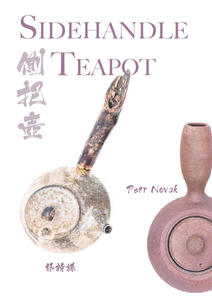 |
|
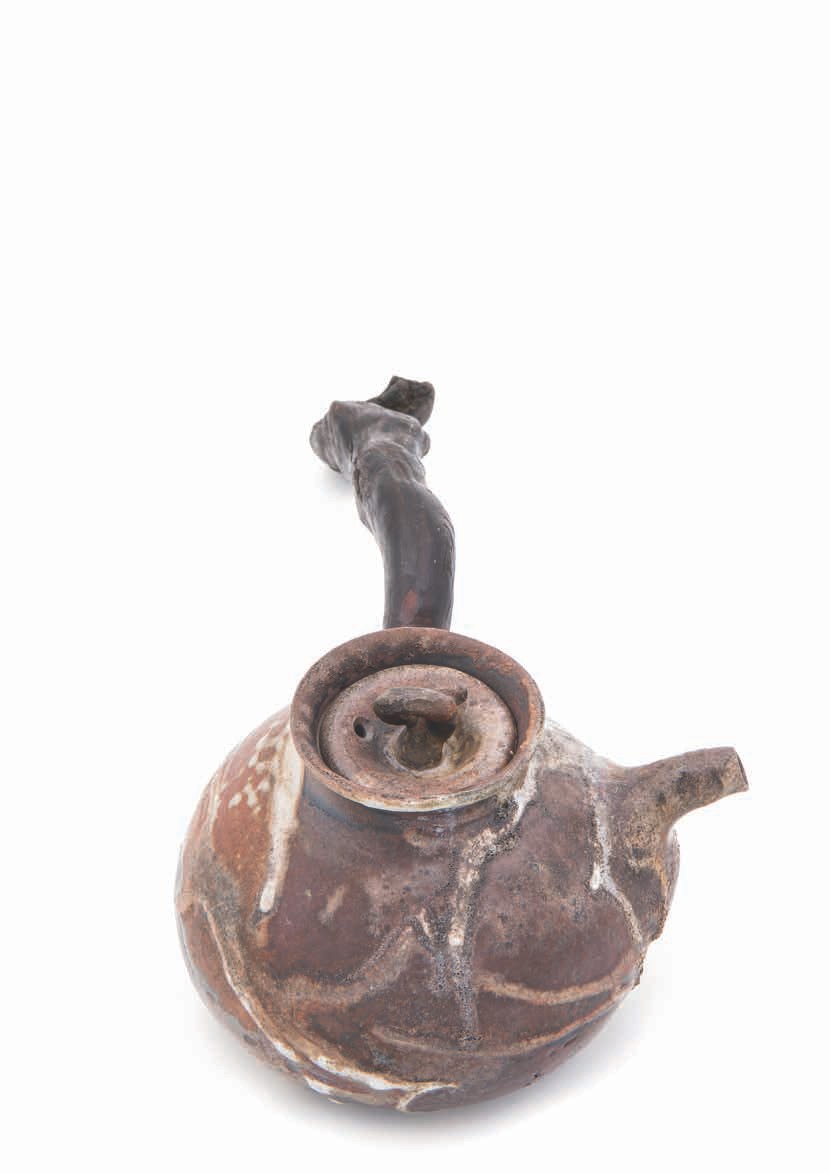
Taiwan is renowned for preserving many old traditions and ways of life. Oftentimes traditions and practices have a way of ending up in Taiwan, where the seeds lay dormant for a while before sprouting into something truly unique and beautiful. And Peter Kuo is a product of this beautiful island, in these ways and more.
Finding the right sidehandle teapot can be a difficult journey to navigate, and particulary as fewer and fewer potters are making teaware with tea preparation in mind - focusing on design instead. Artists nowadays devote their energy towards creating teaware that favors beauty over function. Peter Kuo works hard to be an exception to this. He has learned to listen to the dialogue between Tea and Earth - between two intertwined elements - and has found the delicate balance of embodying beauty and function in teaware. He brings to life sidehandle teapots that each maintain an elegant presence in the tea space, carrying with them the stories of their journey through the elemental fire that has transformed their once soft clay bodies into crystalline forms and textures reminding one of mystical landscapes, wood shaped by Nature and fit to the pot as a handle, rustic charm that suits a bowl tea ceremony and also function in the pour, handle angle, nice clay for tea and other elements that make the pot function well.
Though function is not primary in a bowl tea ceremony, it is nice to meet a potter who cares about how his works are used and where. You can certainly feel the Tea spirit in Peter Kuo's pots, and they are the favorites of many Chajin around the world for that very reason.
Peter is remarkably young, and despite his young age, he has already forged a name for himself, learning the dialogue of Earth and Fire. He is in his early thirties, visibly burning with passion for creating ceramics and exploring the endless possibilities that arise from the conversation humans have with the elemental forces of this world. He also loves tea, and unlike most potters in the world, is willing to listen and learn about tea brewing from Wu De and other teachers, adapting his ceramics to suit tea brewing and Tea spirit.
Peter was born and raised in Yingge, and even from a young age felt an affinity with clay. Being brought up in an environment steeped in ceramics and the arts nurtured the seeds that would eventually lead to his inspiration to take up sculpture. After finishing his schooling at one of Taiwan's most distinguished arts high schools, where he majored in sculpture, he began his life with clay, learning to work with this medium after meeting with a local ceramics teacher who inspired him. This auspicious connection with a new teacher merged the mediums of sculpture and ceramics.
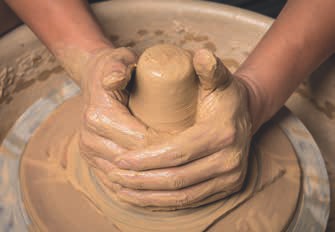
Peter spent the next few years studying ceramics, learning the many skills that are interwoven within this single discipline. His dedication to his practice grew constantly, and by the age of twenty-three, he began to work fulltime with ceramics, an achievement in and of itself. Slowly, as his experience and skills deepened, and he gathered resources, he rented an old teaware factory, which would one day become the space where he now displays his pieces and serves tea and food to guests. At the time, however, it was his studio.
In between these two points in time, Peter had a rather transformative experience: he began drinking Tea! He began to feel Tea and be influenced by approaching Tea as a Way. Drinking tea shifted his approach to ceramics greatly. It allowed him the space to create teaware with tea brewing in mind, rather than purely an aesthetic endeavor; it brought function to his background in sculpture (form). Around the same time that he began drinking tea, Peter also began studying under a famous wood-firing ceramics teacher, learning to use elemental Fire to create beautiful, unique teapots. He fell in love with this process immediately, and in 2011, he built his own woodfire kiln. It is the same kiln he uses to this day, though now he has developed an intimate relationship with the kiln, understanding its unique personality, and more intuitively working with the wood-firing process. Peter says that the shift to wood-firing was as important as his move from sculpture to teaware.
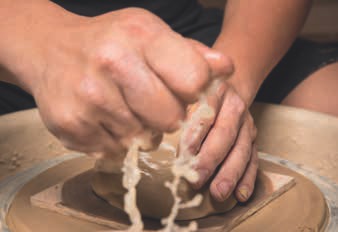
Peter finds great joy in the challenges of wood-firing. It is within the inferno of the kiln that his greatest challenges and greatest rewards are revealed. He does not choose to journey the well-traveled path, favoring the challenges that come with changing clay blends for each firing. He has found a mix of different clays from America and Taiwan to produce the desired quality in his teaware, resulting in some consistency, though there is never any certainty when wood-firing.

When the time comes to light the kiln, he and his partner, CiCi, will spend four days without sleep while the fire burns. As they labor tirelessly to maintain the kiln, temperatures inside will reach 1250 °C. It is during this climactic moment that more than two months of work is condensed into a single moment: If the kiln becomes too hot or there are inconsistencies in the firing, all of Peter's work for the last two months will result in failure. He openly admits that during the first months after building his kiln, there were many failures. In the beginning of any practice, failure underpins the endeavor, but if this becomes a lesson learned, these failures are transformed into success, becoming the wisdom that leads to mastery. Peter did not resign himself to failure, allowing those early days to become the foundations of what he has accumulated today. Slowly, he has grown to understand the wood firing process more intuitively, developing a relationship with the kiln and learning its personality.
Peter continually seeks to explore the conversation between the elements, trying to create sidehandle teapots that are born from the Earth, tempered in the Fire and carry the primordial energies of these elements with them into each Tea (Wood) that is served in them. Each teapot is an expression of Nature. It can be felt profoundly when you hold or even momentarily touch one of his teapots: They speak to you of their journey to be here-now, in this moment.
A larger, constant theme influencing the way Peter approaches the making of sidehandle teapots is the concept of karma, of cause and effect. He strongly views each teapot as a seed planted into fertile soil, to grow and become a tree rooted deeply in time and space. In a sense, Peter hopes that his teapots will offer tea to many people around the world, and in doing so, positively influence them. Through such a sidehandle teapot, you can share in the joys of Tea with more and more people, creating a space for connection and celebration.
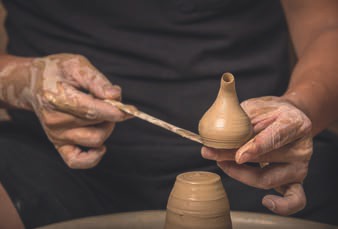

With seemingly inexhaustible vigor, Peter is always exploring new ways of expressing the ancient dialogue between humans and Nature, evolving the way he makes ceramics, chasing perfection and harmony. Like any talented artist, he is never entirely satisfied with the end result, always making mental notes on how he can improve the next time he sits at the wheel. His creative expression and approach to ceramics has been influenced by his insatiable desire for continual improvement. It is the accumulation of more than twelve years of practice and discipline. It is through his continual experimentation that he has been able to cultivate the skills necessary to create teaware that is both beautiful to gaze upon and is also functional. Each change he makes comes from integrating past failures and mistakes to improve function. It was, in fact, this attitude, along with his Tea spirit, that drew Wu De into his shop some fifteen years ago, and why the two are great friends even now.
Peter and CiCi often visit the Center, or we go to Yingge to see them. Even now, Peter is always asking about his pots and their function, as well as about tea brewing. I don't understand the conversations he has with Wu De, as they talk in Chinese, but it is obvious to see that all the creative juices start flowing in Peter. I can always see the wheels turning as he listens intently, making notes inside to improve his craft. A "beginner's mind," with humility and a desire to improve and grow are the hallmarks of a true artist, and the steps on the road to mastery. That Peter cares about how his pots are used, and how to improve them in the future, already sets him apart from most teaware makers in the world. That he also understands that he must improve his own tea brewing skills to achieve this is a powerful recipe for great pots to come!
One of the most unique elements within his sidehandle teapots is the use of wood or bamboo for the handles of each teapot. Peter will often spend countless hours searching in places of Nature for pieces of wood that seek a new home. It is a part of the process that brings him into physical conversation with Nature, often gifting inspiration for future projects and ways of bringing Nature into each form created. "The wood already knows the teapot that it will become a part of," Peter says. Though it takes a long time and Mother Earth's patience to hear those unspoken words, eventually Wood, Earth and Fire meet in his pots.
Peter never forces the connection between the body of the teapot and its handle. He will sometimes wait weeks or months to find the perfect marriage of the elements - of Tree and Mountain. He says that sometimes he finds two pieces that immediately "want" to be together. In such moments, a tangible magic can be felt. This is yet another example of his devotion to creating something that embodies harmony with Nature, which is why we love to use his pots in our ceremonies. Peter carries this forward even into the pursuit of suitable glue for the wooden handles. He has spent countless hours experimenting with different glues, finding one that is suitable for creating a seamless marriage between the body of the teapot and its handle: strong and durable, but invisible and without any toxicity that will impact the tea liquor.
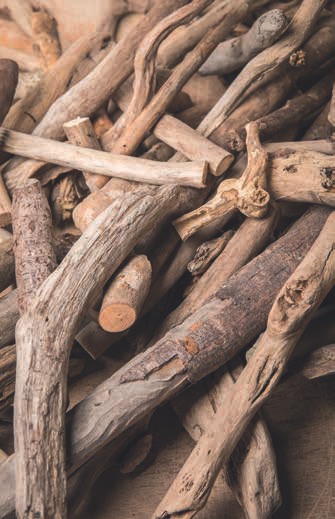
Peter hikes all throughout Taiwan, finding wood on the beach, in the mountains and forests, and sometimes bamboo, from throughout Taiwan and even Japan. He showed us a huge box of wood he has collected over the years, saying that most of the pieces won't work on a pot. "It is hard to balance a piece of wood onto a pot, since you don't have much control over the shape or angle - other than turning the wood this way or that," he says with a smile. "I try to not carve or shape the wood much, just working a bit with it. Instead, I look for pieces that will work naturally."
Peter speaks about how in the early days of searching for the wood or bamboo for his handles, he would always try to find more and more beautiful pieces, and he found, after a while, that this was detracting from the harmony of his teapots. He says, "Now I simply wait for the wood to come to me. I do not strive for pieces that are beautiful. It is often the ones that aren't beautiful that make great handles, and the ones we are attracted to that don't work functionally." He has found the beauty and joy that comes with waiting. And if there are any media in this world that require patience, ceramics is surely one of them.
Through seeking to create sidehandle teapots that are natural, Peter has found a way of speaking the ineffable wisdom of the world, much the way Tea Herself does. His work translates Nature to our lives, bringing the elements home. He has also found a way of sharing his heart that benefits many Chajin around the world, and that is the true spirit of Tea. In our tradition, one's Tea spirit is measure in service - to others, to Tea and to the Way itself. Peter is a true Chajin, and we are proud that he makes sidehandle pots for our tradition and the ceremonies we create around the world in this community.
